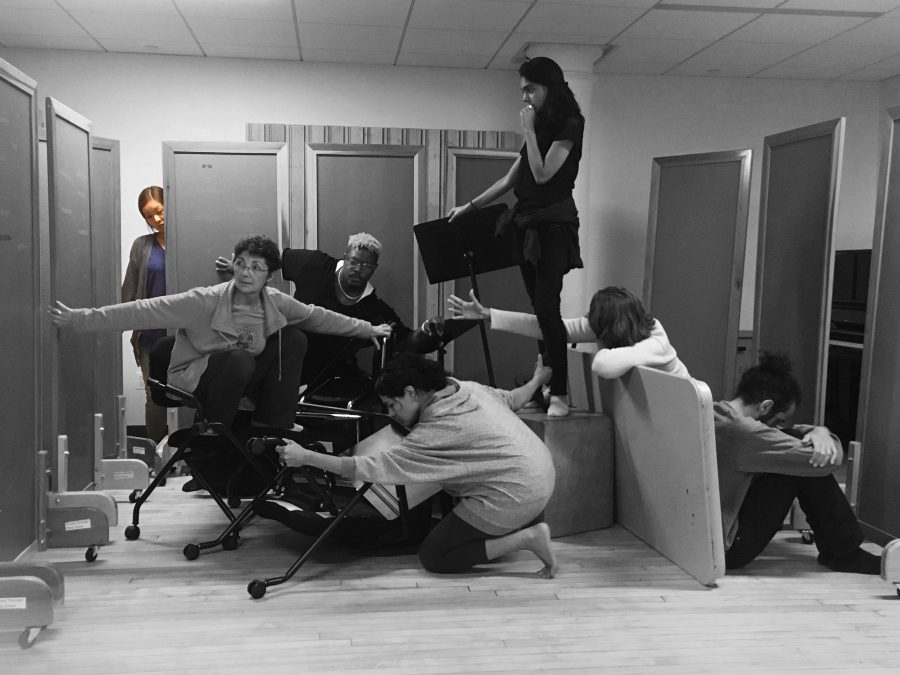NYU Drama Therapy Opens Its Doors
Courtesy of NYU Drama Therapy Department
Written by Eric Bernet, NYU Drama Therapy Department showcased “Behind the Doors” play this past weekend.
November 18, 2016
In an appropriately-timed premiere, the NYU Drama Therapy presented its play “Behind the Doors: Terror in the Home and the World” this past weekend. The department, which was the first in the world to develop an academic program that culminates in a graduate degree, has been working on the production for nearly seven months. It was written by playwright Eric Bernat in collaboration with the cast, several of whom were victims of domestic or international terrorism. Drama therapist Heidi Landis directed the show, and the crowd contained family members of those who were victimized in the 9/11 bombings.
This article is not a review, because it seems crude to critique someone’s therapy. The play’s goal was to see how to work through trauma through drama, and whether or not it’s even a good idea to do so. To critique something with the end objective of healing is entirely beside the point.
That said, the production as a whole was very well done. Playing off the title and the central theme, the set included three different doors, two of which were mounted on wheels. Throughout the play, the doors were moved around to achieve different effects — sometimes literal, sometimes less so. One short scene even featured a personification of the door at center stage, where one actress took on the character of the door and delivered a monologue that at first seemed cute and clever but quickly became poignant and nearly uncomfortable. Doors, as it happens, are a great metaphor for dissociative social behavior.
The play was made up of several of these vignettes, most featuring just a few of the cast members. The fourth wall wavered in and out of existence — when making particular points, or emphasizing some much-needed comedic timing, the actors would address the crowd directly. Otherwise, they were engaged in their own world of doors and terror.
Each scene took place after the events of terror, and each began comically. It was moments further in — breakout moments in which a man began barking hysterically as his waitress begged to know what he needed, or a woman pleaded either to keep a door shut or have it opened and the room behind it examined, or the president held at gunpoint as the would-be shooter debated whether or not she needed a gun — that made the audience grip their armrests and grit their teeth.
Different than watching a horror movie or a tragic play, watching therapy for the trauma of terror scares the audience for its reality. There is no imagination here. Both at the beginning and the end of the play, clips ran on the back of the stage of Donald Trump’s speeches, of news coverage of the famed Syrian refugee child in shock, or of footage following the San Bernardino shootings. The events that the actors were recovering from really took place; the symptoms they struggled with and the slurs they had hurled at them were their lived experiences.
Sure to say there is little to no theater more emotionally affecting than dramatic therapy, and “Behind the Doors” in particular. The script they created was fantastic — just clever enough to keep most tears at bay, but unflinching enough not to be a joke. One can only hope and pray that it was as effective for those who were using it as therapy.
Email Hailey Nuthals at [email protected].

























































































































































